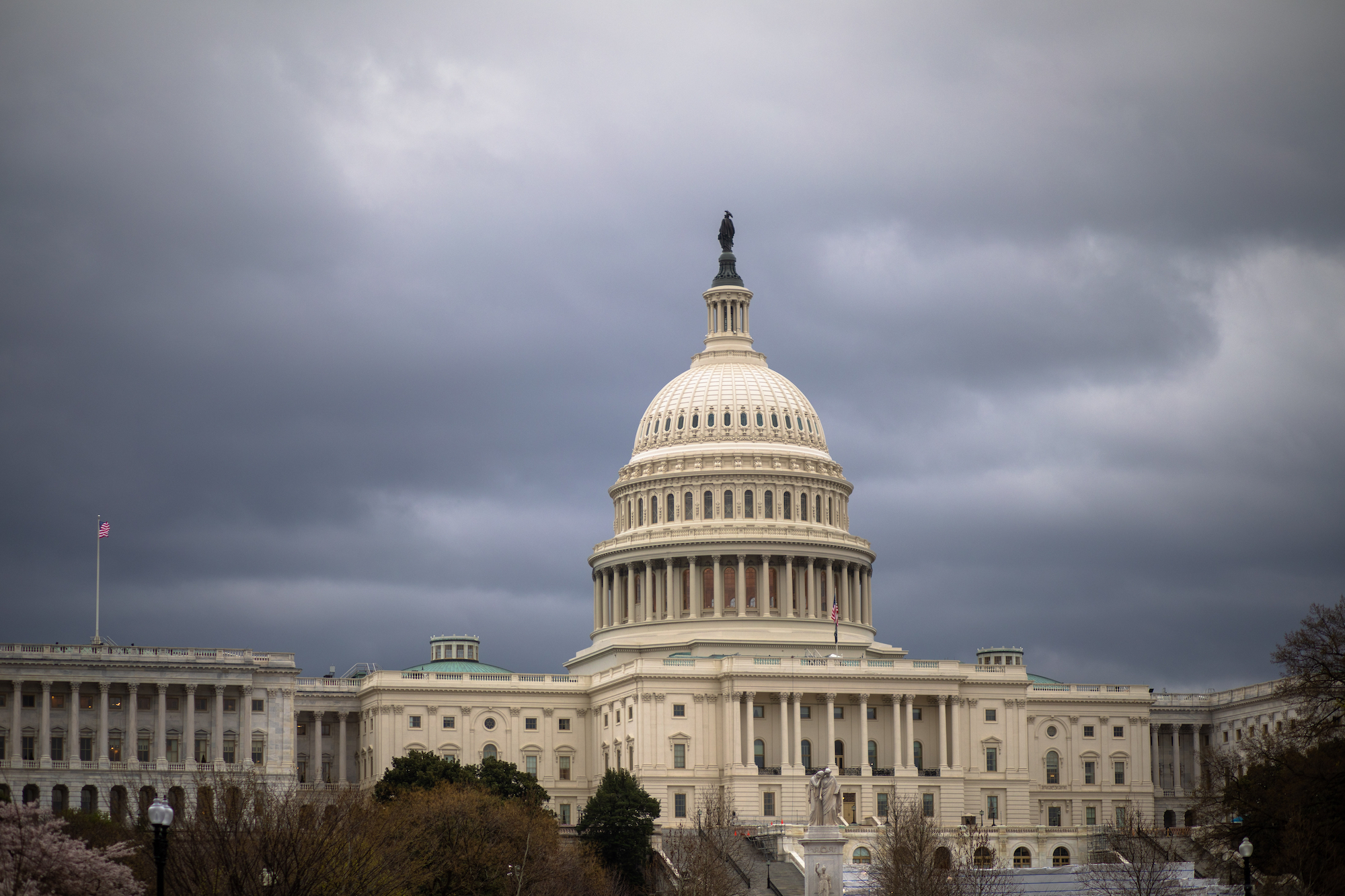Rick Morain is the former publisher and owner of the Jefferson Herald, for which he writes a regular column. This essay first appeared on Substack.
Why does Congress even bother to debate an annual budget?
Every year members of the federal legislative body spend innumerable hours in committees and on the House and Senate floor debating discretionary appropriations decisions. Intense negotiations sometimes produce some or all of the 12 regular mandatory appropriations bills that designate how various departments will spend funds in the coming fiscal year. (The federal fiscal year runs from October 1 to September 30.)
The operative word there is “sometimes.” That’s because Congress usually can’t make its required appropriations decisions before the end of the current fiscal year. In those instances—which happen depressingly often—Congress may pass a continuing resolution that extends current levels of spending in those departments. When that happens, the legislators will then provide supplemental appropriations in the new fiscal year for needs or emergencies that arise. (Editor’s note: The last year Congress approved all twelve budget bills on time was 1996, for fiscal year 1997.)
Some spending is mandatory, as opposed to discretionary. Mandatory appropriations are determined by earlier legislation and don’t require annual votes. Social Security, Medicare, Medicaid, veterans’ benefits, and interest on the federal debt are examples.
What makes the discretionary process ruefully comical is that after all the time, sweat, and tears expended hammering out spending decisions in Congress, the president or Congress itself may cancel some of what is appropriated, and refuse to spend it. That’s called a rescission.
Presidential rescissions require Congressional approval within 45 days of receiving the president’s rescission message; without that approval, the administration must spend the money as designated. Or at least that’s supposed to be the law.
Failure either to appropriate money for the coming fiscal year or to adopt a continuing resolution, like failure to raise the debt ceiling to accommodate appropriation levels that are higher than the current ceiling, can cause the government to shut down. The threat of that eventuality gives most government officials heartburn, both because of the damage that a shutdown can do and because most voters don’t like it.
So when Congress is closely divided, as it is at present, a few members of the majority party, who are willing to risk a shutdown in order to accomplish their pet desires, hold great power, especially if all or nearly all of the minority party representatives hold fast in opposition as well. That’s when appropriations compromises come into play.
And that’s why the phrase “ruefully comical” is accurate. A very difficult compromise may finally be achieved, only to be rendered meaningless by a presidential rescission after the crisis passes, or by a Congressional one. When the president and the Congressional majority are of the same party, it’s usually unlikely that Congress will deny the president his wish for a rescission.
Under those conditions, why should the minority even bother to work toward a compromise to keep the government open, if any concessions can be deep-sixed?
Rescission would be an easier way to prevent spending appropriated funds than a line-item veto would. President Bill Clinton persuaded Congress to approve line-item veto legislation, but it was struck down as unconstitutional by the Supreme Court in 1998. And even if had been permitted, overriding a veto requires a two-thirds majority of both houses. A presidential rescission requires only a simple majority in each house.
Although presidents since Gerald Ford have used rescissions, the Trump administration is using the process today as an expression of its driving philosophy: the Unitary Executive Theory. That theory maintains that the president is a one-person executive branch who personally holds all executive power. That includes whether to spend appropriated funds; which government employees, including heads of agencies, can be fired without cause; and indeed, which laws the president must carry out and which can be ignored.
The Unitary Executive Theory is what drives Project 2025, the document created by the conservative think tank The Heritage Foundation, a group that promotes limited government. Some key members of the Trump administration helped create the document. Trump himself may not be consciously committed to Project 2025, but his key advisers certainly are.
And the conservative majority on the U.S. Supreme Court appears comfortable with much of the Unitary Executive Theory, granting Trump more power with fewer constraints than previous presidents have enjoyed.
No previous president, for instance, had tried to bypass Congress by doing a “pocket rescission.” But on August 28, less than 45 days before the end of the 2024-25 fiscal year, Trump did just that by ordering a rescission of $4.9 billion of already appropriated foreign aid and other international funding.
Trump claimed his rescission was legal because it took place near the end of the fiscal year, so did not need Congressional approval.
A federal judge and the nonpartisan Government Accountability Office ruled Trump’s pocket rescission was illegal, and the administration must spend the $4.9 billion. But Trump appealed their decision, and the question remains unresolved at this writing.
Unless Congress is willing to defy Trump’s interpretation of the rescission authority, the entire bipartisan Congressional appropriations process potentially becomes a meaningless charade. The majority might just as well automatically approve Trump’s budget and move on to other things.


1 Comment
it's been both interesting and horrifying
to see that the pitch we were all indoctrinated into about “checks and balances” is an impotent myth.
https://www.weekendreading.net/p/monsters-and-their-enablers
dirkiniowacity Fri 12 Sep 1:02 PM